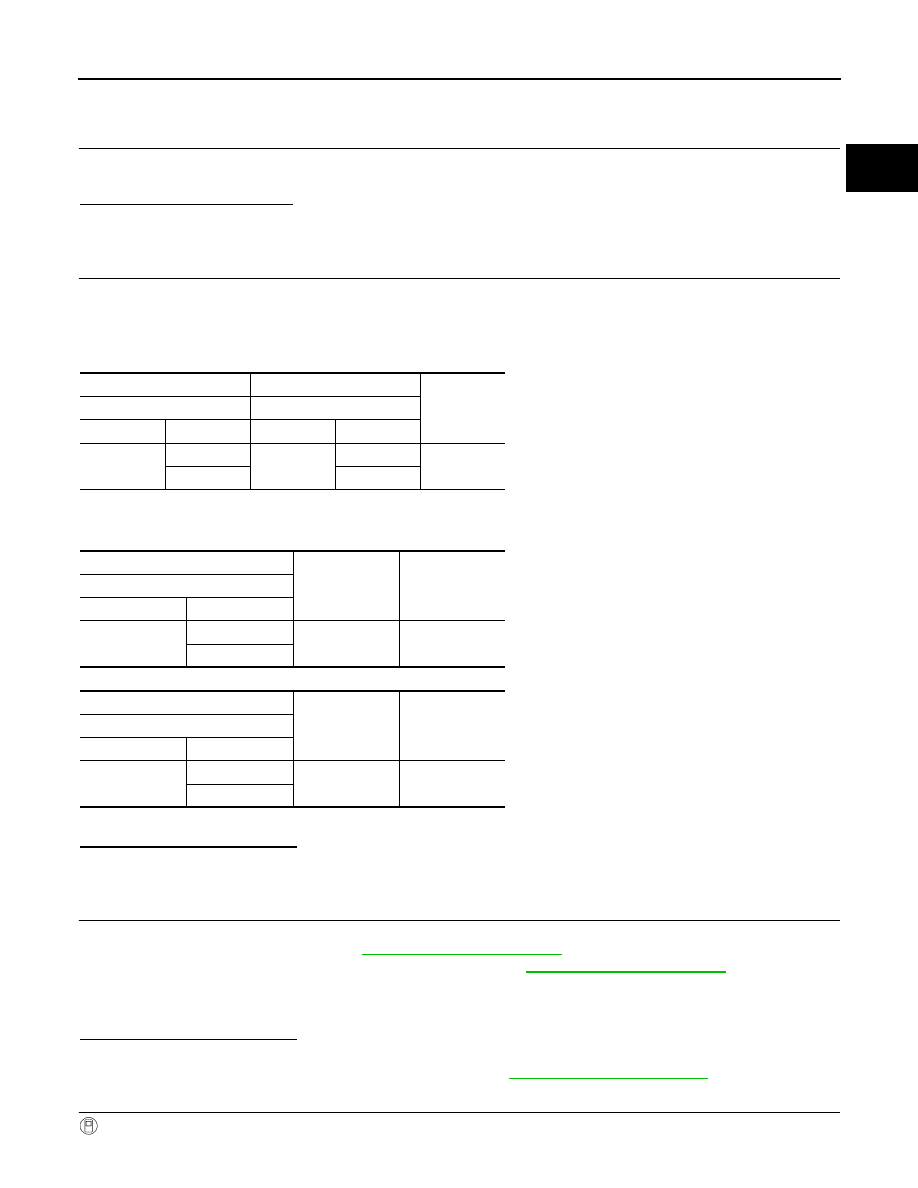Nissan Qashqai J11. Manual - part 315

P0172 FUEL INJECTION SYSTEM FUNCTION
ECM-237
< DTC/CIRCUIT DIAGNOSIS >
[MR20DD]
C
D
E
F
G
H
I
J
K
L
M
A
ECM
N
P
O
YES
>> Repair or replace malfunctioning part.
NO
>> GO TO 2.
2.
CHECK FOR INTAKE AIR LEAKAGE
1.
Listen for an intake air leakage after the mass air flow sensor.
2.
Check PCV hose connection.
Is intake air leakage detected?
YES
>> Repair or replace malfunctioning part.
NO
>> GO TO 3.
3.
CHECK A/F SENSOR 1 INPUT SIGNAL CIRCUIT FOR OPEN AND SHORT
1.
Turn ignition switch OFF.
2.
Disconnect corresponding A/F sensor 1 harness connector.
3.
Disconnect ECM harness connector.
4.
Check the continuity between A/F sensor 1 harness connector and ECM harness connector.
5.
Check the continuity between A/F sensor 1 harness connector and ground, or ECM harness connector
and ground.
6.
Also check harness for short to ground and short to power.
Is the inspection result normal?
YES
>> GO TO 4.
NO
>> Repair or replace malfunctioning part.
4.
CHECK FUEL PRESSURE
1.
Install all removed parts.
2.
Release fuel pressure to 0. Refer to
3.
Set a fuel pressure meter and check fuel pressure. Refer to
Is the inspection result normal?
YES
>> GO TO 5.
NO
>> Replace malfunctioning fuel gauge unit. Refer to
.
5.
CHECK MASS AIR FLOW SENSOR
WITH CONSULT
+
−
Continuity
A/F sensor 1
ECM
Connector
Terminal
Connector
Terminal
F74
1
F16
64
Existed
2
72
+
Ground
Continuity
A/F sensor 1
Connector
Terminal
F74
1
Ground
Not existed
2
+
Ground
Continuity
ECM
Connector
Terminal
F16
64
Ground
Not existed
72
At idle: 500 kPa (5.0 bar, 5.1 kg/cm
2
, 73 psi)